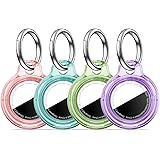The global textile waste crisis demands urgent attention, with an estimated 92 million tons of textile waste generated annually, much of which ends up in landfills. This staggering figure underscores the profound impact of fast fashion’s linear consumption model. As highlighted in the accompanying video, initiatives like Street Stitchers, operating across 15 countries, offer a tangible and inspiring alternative to this unsustainable cycle by championing garment repair and promoting a circular approach to clothing consumption. Their work during **Sustainable Fashion Week** serves as a vital reminder that extending the life of our garments is a powerful act of environmental stewardship.
1. Deconstructing the Fast Fashion Predicament: A Call for Garment Repair
The prevailing fast fashion paradigm is characterized by rapid production cycles, low price points, and planned obsolescence. This model fuels a culture of disposability, where garments are often worn only a few times before being discarded, contributing significantly to environmental degradation. The resource-intensive manufacturing processes, coupled with the vast quantities of post-consumer textile waste, present a formidable challenge to ecological balance.
A crucial aspect of this predicament is the erosion of garment longevity, as clothing items are not designed for durability or repairability. This linear “take-make-dispose” system stands in stark contrast to the principles of a circular economy, which advocates for products, materials, and resources to be kept in use for as long as possible. Embracing **garment repair** shifts this narrative, transforming consumers from passive recipients into active participants in sustainable practices.
2. The Revolutionary Act of Mending: Prolonging Garment Lifecycles
As Suzie Warren, leader of the Street Stitchers, eloquently states in the video, their mission is to demonstrate “an alternative to just buying a lot of quick, quick, cheap disposable clothes, by repairing and mending, keeping things, and kind of loving them back to life.” This sentiment encapsulates the essence of a paradigm shift. Mending is not merely a utilitarian act; it represents a commitment to the lifecycle of an item, imbuing it with renewed value and character.
1. By consciously choosing to mend a torn seam or replace a broken zipper, consumers actively resist the disposable culture that dominates the fashion industry. 2. This proactive engagement reduces demand for new items, consequently decreasing the environmental footprint associated with manufacturing, transportation, and eventual disposal. 3. Furthermore, the act of repair fosters a deeper, more emotional connection to clothing, transforming a garment from a transient commodity into a cherished possession with a unique narrative.
3. Street Stitchers: Empowering Communities Through Visible Mending and Sustainable Fashion
The Street Stitchers’ approach, as seen with Madeleine Tanato’s hope that public stitching will inspire home repairs, effectively democratizes the skill of mending. By setting up visible mending stations outside fast fashion shops, they disrupt conventional consumer behavior and offer an accessible entry point into **sustainable fashion** practices. This direct, public demonstration serves as a powerful reminder that garment care skills are not “beyond them,” as Madeleine notes, but rather accessible to all.
1. Their strategy involves more than just fixing clothes; it’s about igniting conversations and rebuilding forgotten skills within communities. 2. The provision of a QR code linking to a website with information on sewing and fixing clothes further amplifies their impact, bridging the gap between passive observation and active participation. 3. This model effectively cultivates a grassroots movement, transforming individual actions into collective change and establishing local hubs for textile circularity.
4. Cultivating a Circular Wardrobe: Beyond Basic Repair
While mending is a cornerstone of **garment repair** and sustainable practices, developing a truly circular wardrobe extends beyond simple fixes. It encompasses a holistic approach to textile consumption and care, integrating various strategies to maximize product utility and minimize waste. This comprehensive perspective is essential for tackling the systemic challenges posed by the current fashion ecosystem.
Consider the contrast: a linear wardrobe operates like a leaky bucket, constantly acquiring new items and quickly disposing of old ones. A circular wardrobe, conversely, functions more like a closed-loop system, where every item is valued, maintained, and recirculated. This involves practices such as:
- **Thoughtful Sourcing:** Prioritizing high-quality, durable garments made from sustainable materials.
- **Upcycling and Customization:** Repurposing old clothes into new items or modifying them to extend their relevance and appeal.
- **Responsible End-of-Life:** Ensuring garments are properly recycled or composted when they can no longer be worn or repaired.
- **Care and Maintenance:** Adopting proper washing and storage techniques to prolong garment life.
5. Practical Steps for Embracing Sustainable Fashion and Garment Repair
For individuals seeking to transition from fast fashion consumption to a more circular and sustainable wardrobe, several actionable steps can be taken. These strategies not only reduce environmental impact but also cultivate a more mindful and rewarding relationship with clothing. The principles championed by initiatives like Street Stitchers during **Sustainable Fashion Week** are readily adaptable for personal application.
1. **Master Basic Mending Skills:** Start with simple repairs like sewing on buttons, patching small holes, or re-stitching seams. Numerous online tutorials and local workshops can provide guidance, reflecting the accessible nature of the Street Stitchers’ QR code resource. This empowers individuals to take immediate control over their garment’s longevity. 2. **Invest in Quality Over Quantity:** Prioritize well-made clothing designed to last, even if the initial investment is higher. This contrasts sharply with the ephemeral nature of cheap, disposable fashion and ultimately proves more economical in the long run. Durable items reduce the frequency of needing new purchases. 3. **Practice Conscious Consumption:** Before making a purchase, pause to consider whether the item is truly needed, if it aligns with existing wardrobe pieces, and its overall lifecycle impact. This thoughtful approach minimizes impulsive buys and curates a more cohesive, adaptable collection. 4. **Explore Upcycling and Customization:** Transform tired or outdated garments into something new and exciting. A simple dye job, embroidery, or structural alteration can breathe new life into an item, preventing it from ending up as textile waste. This creative expression personalizes fashion while extending utility. 5. **Support Circular Fashion Brands and Initiatives:** Seek out brands committed to ethical production, sustainable materials, and take-back programs. Engaging with community initiatives like repair cafés or textile recycling programs further amplifies individual efforts. This collaborative spirit drives systemic change within the fashion industry towards greater sustainability.











